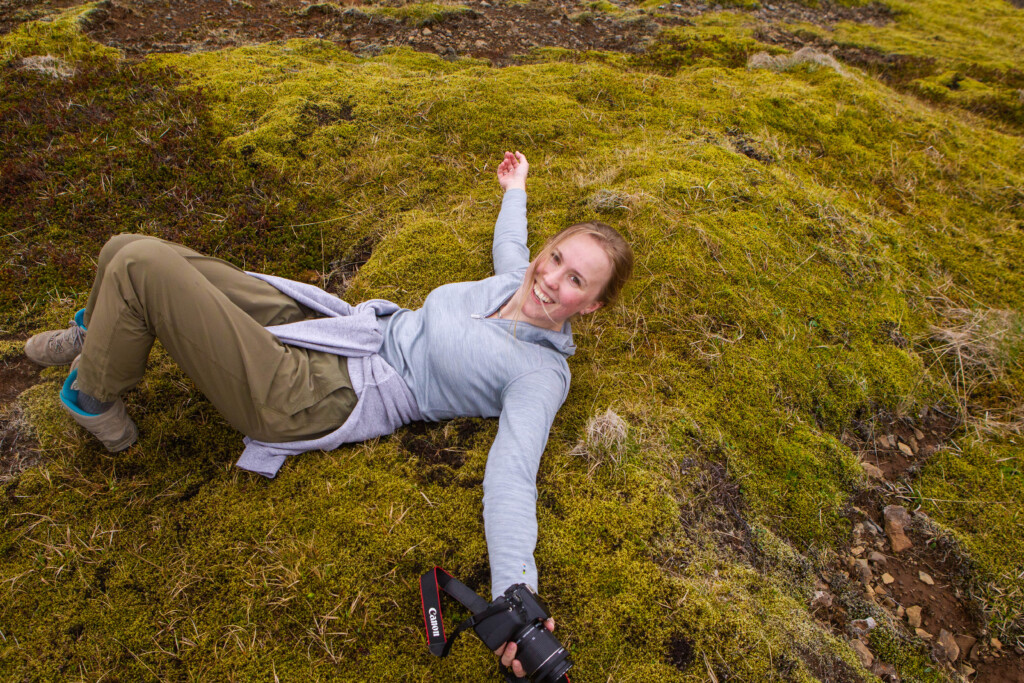Page 226 • (2,483 results in 0.03 seconds)
-

dive into difficult conversations about race relations in the United States.“The consciousness of this country is shifting,” says Cunningham, who works in the PLU Campus Ministry office and partners with the university’s Center for Graduate and Continuing Education to produce People’s Gathering events. “Where we are right now in our nation’s history and our national rhetoric, we need to learn how to talk about race. Most of us learn about race on our own, and that can be really difficult.” Each
-

was my admiration for how Icelanders view the earth and how those values affect their conservation efforts. When there is a deeply rooted connection to your land and its history, there is a stronger motivation and passion for protecting it at all costs, and that was so cool to experience firsthand. What an amazing takeaway! How has this internship informed your future? AS: This internship has offered me incredible experience for what I want to do. The way I describe my niche is environmental
-

is an interdisciplinary program focused on creative solutions, using design thinking, collaboration, and entrepreneurial mindsets. Working in teams, students develop opportunities and solutions for contemporary problems. The program’s class options span the gamut from video game history to business to graphic design. A makerspace in Hinderlie Hall offers sewing machines, electronics, paints, and more for crafting inventions. In an innovation seminar, Ambachew learned about the cyclical creative
-
the Environment. The Philosophy Major A major in philosophy is 32 credits, or eight courses. They include Formal Logic (233), the Advanced Seminar (490), and at least two of the five courses in the history of philosophy: Ancient Philosophy (331), Modern Philosophy (333), Pragmatism and American Philosophy (336), Existentialism and Continental Philosophy (338), or The Analytic Tradition (335). On approval of the department, four credits in another field of study may be used for the philosophy major
-
Philosophy professors. Dr. Sergia Hay teaches courses in applied ethics and the history of philosophy. Her area of scholarly specialization is Søren Kierkegaard, and she is an organizer/officer within the SOPHIA Organization. Dr. Mike Rings teaches courses in ethics, social and political philosophy, and environmental philosophy. He helps Dr. Hay create SOPHIA-sponsored events that enact deep conversations and dialogues. The purpose of the SOPHIA organization, as Dr. Hay stated in an interview, “is to
-

got to know their neighbors – both locally and on a global scale. His primary responsibility on this particular voyage was to teach English to middle-school students, the time when most kids there begin their first introduction to “English iu Comoros.” He also worked with their “Comoros Explores Club” where students from seven towns come together to explore and learn about the history and culture in their own backyards. “The club fostered a spirit of appreciation and excitement for their
-

about a fatal shooting of one student’s best friend, turning it into a lesson on justice in the community. “I try not to shy away from the grittiness of the world,” Cushman said. “Students need to know the harsh and uncertain realities that await them. They have to be prepared academically, socially and emotionally…to overcome obstacles.” Cushman’s own history with overcoming adversity undoubtedly lends to his perspective on teaching, nurturing and uplifting young people in the community. He says
-
could be a better place if people simply got to know their neighbors – both locally and on a global scale. His primary responsibility on this particular voyage was to teach English to middle-school students, the time when most kids there begin their first introduction to “English iu Comoros.” He also worked with their “Comoros Explores Club” where students from seven towns come together to explore and learn about the history and culture in their own backyards. “The club fostered a spirit of
-
interdisciplinary, so most of the courses that count toward the 24-credit minor are offered by other departments (such as History, Religion and Anthropology). But Storfjell and his colleagues did create a few new courses, including a two-part series called “Interconnections” that aims to provide students and faculty a space to discuss “progress, challenges and the intersection of indigenous approaches and the university experience.” The program as a whole will teach from “a global indigenous focus centered in
-
according to the art critics (Abiodun 22) – Kelsey Barnes ’16, Anthropology & Art History Sources Abiodun, Rowland. “African Aesthetics.” Journal of Aesthetic Education. Vol. 35, No. 4 (2001): 15-23. Drewal, Henry John, John Pemberton, Rowland Abiodun, and Allen Wardwell. Yoruba: Nine Centuries of African Art and Thought. New York: Center for African Art in association with H.N. Abrams, 1989. Fakẹyẹ, Lamidi Ọlọnade, Bruce M. Haight, with David H. Curl. Lamidi Ọlọnade Fakẹyẹ: My Life and My Art. Holland
Do you have any feedback for us? If so, feel free to use our Feedback Form.


